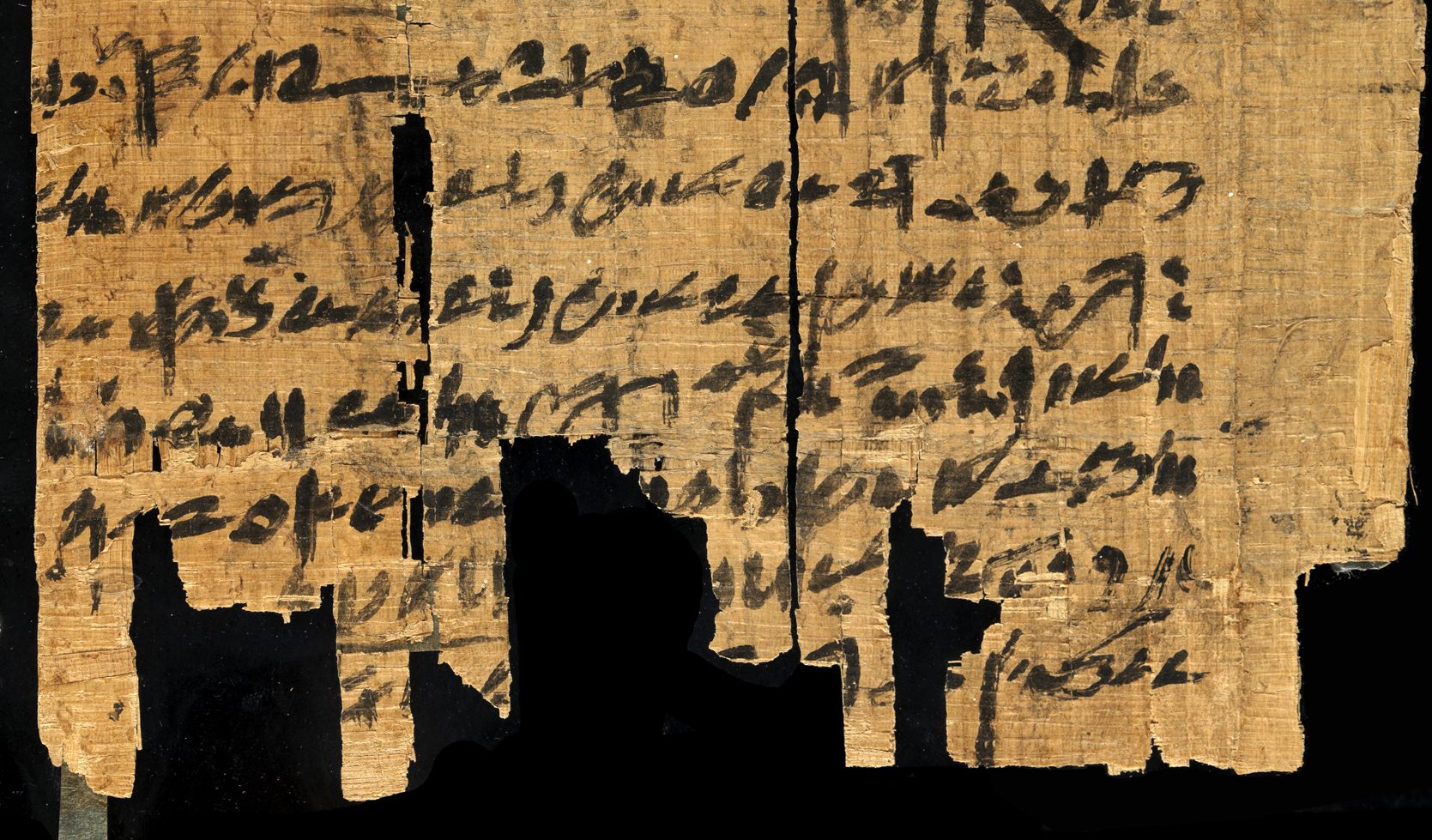P. Louvre E 7851 verso
See more information about P. Louvre E 7851 verso in Trismegistos’ Demotic and Hieratic Texts [TM 48864].
Recommended edition
K. Donker van Heel, ‘Papyrus Louvre E 7851 recto and verso: two more land leases from the reign of Taharka’, RdÉ 50 (1999), 135-147.
Transcription
Transcription of P. Louvre 7851 verso in PDF
Transliteration
- Ḥꜣ.t-sp 26 ı͗bd-IV pr.t (sw) 14 ḏd wꜣḥ-mw Ḥtp-I͗mn sꜣ Dı͗-I͗mn-pꜣ-ꜥnḫ
- n s.ḥm.t Tꜣy-kꜣ-…: šp(=ı͗) n=t tꜣy dnı͗.t ꜣḥ n tꜣ ḥt⸢p Wsı͗r⸣
- nty Pꜣ-ẖnn n rn I͗r.t-Ḥr-r=w sꜣ Ḫꜣꜥ=w-sw-n-I͗s.t ı͗ skꜣ=f
- ı͗ pꜣ nty ı͗r=f (n) wḏꜣ.t r=w ı͗ p(ꜣ)y=f 1/4 ı͗w ı͗.<ı͗r> pꜣ 1/10 n pꜣ sẖ … pr.t n. ı͗m=f
- ı͗ pꜣ nty ı͗w(=ı͗) ı͗r=f n nꜣ ı͗t (?) r=f ı͗w mn dı͗.t(=ı͗) md nb r ḏd.ṱ=s ı͗r<m>(=t).
- Pꜣ mtr-sẖ Ḫꜣꜥ=w-sw-n-I͗s.t <sꜣ> Ns-I͗mn-I͗p.
- M-sẖ Ḏd-Mnṱ-ı͗w=f-ꜥnḫ sꜣ I͗r.t-Ḥr-r=w ı͗w=f-mtr ⸢ı͗⸣ sẖ nb nty <ı͗r> ḥry ḥꜣ.t-sp 26 ı͗bd-IV
- pr.t (sw) 14.
Translation
- Regnal year 26, month IV of peret, (day) 14. Has said the choachyte Hetepamun son of Diamunpankh
- to the woman Tayka-… : “I have received from you this share of a field in the endowment of Osiris,
- which is (in) Pakhenen in the name of Irethoreru son of Khauesenese, to plow it
- for what it will make as remainder for them, for its 1/4, whereas the 1/10 (is) for the … scribe, seedcorn included,
- for what I will make out of the grain (?) for it, whereas I have no issue to discuss with you at all.”
- The witness-scribe Khausenese son of Nesamunip.
- In the handwriting of Djedmontiufankh son of Irethoreru, who testifies to all writing which was made above (in) regnal year 26, month IV
- of peret, (day) 14.
Notes
Line 4: r=w unread in ed. princ., but see Donker van Heel in Lippert, Schentuleit, and Stadler (eds), Festschrift Vittmann, 108.
Line 5: Reading of the word after ı͗t cf. comment on recto line 9.
Line 5: This seems to be the way this scribe writes ı͗rm cf. P. Louvre E 7851 recto line 10.
Questions about this manuscript
Question:
Many names in Abnormal Hieratic are theophoric, meaning that they contain the name of a divinity. Try and identify I͗mn (line 1 (twice) and 6); I͗s.t (lines 3 and 6); Wsı͗r (line 2); Mnṱ (line 7) and Ḥr (lines 3 and 7).
